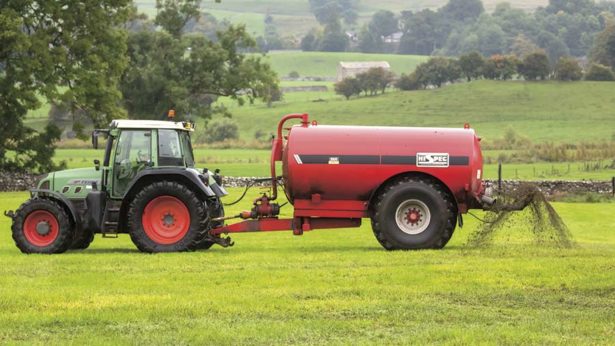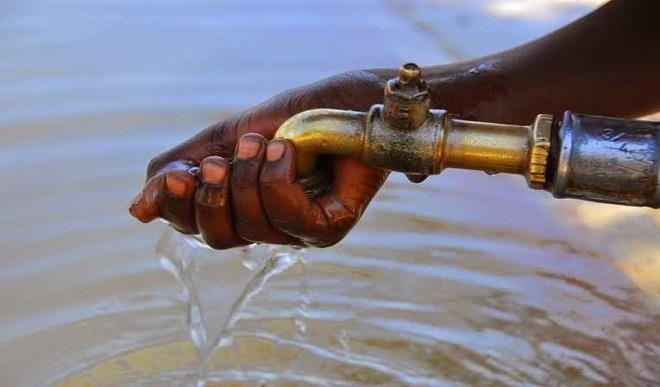From April 2018 livestock farmers in England must comply with a new set of farming rules for water.
There are eight rules, five about managing fertilisers and manures and three on managing soils.
The rules have been introduced to help protect water quality, by standardising practices many farmers are already performing such as those in nitrate vulnerable zones (NVZs).
Nicola Dunn, AHDB resource management scientist, gave us the low-down on what the new rules mean.
The farming rules for water introduced on 2 April 2018 aim to:
- Promote good practice in managing fertilisers and manures
- Encourage land managers to take reasonable precautions to prevent diffuse pollution from runoff or soil erosion
Although they are new rules, there are many similarities with NVZ requirements and cross-compliance rules 1 and 5 of the standards of Good Agricultural and Environmental Conditions (GAEC).
However, some rules may be an additional requirement or new for farmers not in an NVZ, explains Dr Dunn.
“It’s really important all farmers in England are aware of the rules and make sure they are compliant. The rules are quite basic and most farmers should already meet the requirements,” she says.
Summary
In summary, the fertiliser rules require farmers to test their soils, then plan and apply their fertiliser or manure to improve soil nutrient levels and meet crop needs.
Soil testing is required at least every five years.
There are minimum storage and spreading distances from water sources. They also require farmers to assess weather and soil conditions to reduce the risk of runoff and soil erosion.
The remaining rules require farmers to manage livestock by protecting soil within five metres of water and reducing livestock poaching.
Enforcement
The rules will be enforced by the Environment Agency. It is up to you to demonstrate your compliance. The rules do not dictate how you should demonstrate this, but it could be in the form of a written plan.
Rule 1: Planning use of manures and fertilisers
This rule may be new for farmers not in NVZs, farm assurance schemes or those not previously involved with catchment sensitive farming (CSF).
You must plan the use of fertiliser and manures in advance of each application to meet soil and crop nutrient needs and not exceed these levels.
When applying fertiliser to land that has been cultivated (ploughed, sowed or harvested in the past year or land where fertiliser or manure has been applied in the past three years), soil testing should be used in planning.
Soil tests must include measuring:
- Phosphorus
- Potassium
- Magnesium
- pH
- Nitrogen
Tests must be done at least every five years. For nitrogen, instead of a soil test you can use the soil nitrogen supply (SNS) assessment method .
Before each application you must also assess whether there is a significant risk of pollution. This involves you taking into account the following factors:
- The slope of the agricultural land, especially if the slope is greater than 12deg
- The amount of ground cover
- Presence and condition of agricultural land drains
- Proximity to inland fresh waters and coastal waters
- Proximity to wetlands, spring and boreholes
- Weather conditions and forecasts
- Soil type and condition
You must be able to demonstrate you have taken reasonable precautions to reduce the risk of pollution when you apply manure or fertiliser.
There are free tools that can help you plan nutrient requirements, such as the RB209 manual, which was updated last year, Manner NPK and the Tried and Tested nutrient management plan.
Rule 2: Storing organic manures
The main thing to be aware of is the storage of organic manures (muck heaps) near watercourses.
Organic manures must not be stored on land:
- within 10m of inland freshwaters or coastal waters;
- where there is significant risk of pollution entering inland freshwaters or coastal waters;
- within 50m of a spring, well or borehole.
Rule 3: Applying manures or fertilisers
Rules about when and where you can apply manure and fertiliser may be new to farmers not in an NVZ. However, the rules are generally recognised as good practice. The distance relating to watercourses are in line with other environmental regulations.
Organic manures or manufactured fertilisers must not be applied:
- if the soil is waterlogged, flooded, or snow covered;
- if the soil has been frozen for more than 12 hours in the previous 24 hours;
- if there is significant risk of causing pollution.
Rule 4: Where not to apply organic manures
Organic manures must not be applied:
- within 10m of any inland freshwater or coastal waters, or within 6m of inland freshwaters or coastal waters if precision equipment (for example, trailing hose or shoe band spreader, shallow injector, dribble bar applicator) is used;
- within 50m of a spring, well or borehole.
Rule 5: Where not to apply fertiliser
Manufactured fertiliser must not be applied within 2m of inland freshwater or coastal waters.
Rule 6: Reasonable precautions to prevent soil erosion
You must take all reasonable precautions to prevent significant soil erosion and runoff from:
- the application of organic manure and manufactured fertiliser;
- land management and cultivation practices (such as seed-beds, tramlines, rows, beds, stubbles – including harvested land with haulm – polytunnels and irrigation);
- creating farm tracks or gateways;
- poaching by livestock;
- cleaning out ditches.
Rule 7: Protecting against soil erosion by livestock
Any land within 5m of inland freshwater and coastal waters must be protected from significant soil erosion by preventing poaching by livestock. This may include erecting fences to keep animals away from watercourses in some circumstances; or wintering livestock on well-drained, level fields.
Rule 8: Position of livestock feeders
Livestock feeders must not be positioned:
- within 10m of any inland freshwater or coastal waters;
- within 50m of a spring, well or borehole;
- where there is significant risk of pollution from poaching around the feeder entering any inland freshwaters or coastal waters.
What happens if you don’t comply?
- The EA will help you identify the changes you need to make and agree on a timescale by which to make them
- It will then carry out a follow-up visit and ask for photographic evidence of those changes
- If there is a high risk of pollution, it may take enforcement action.





